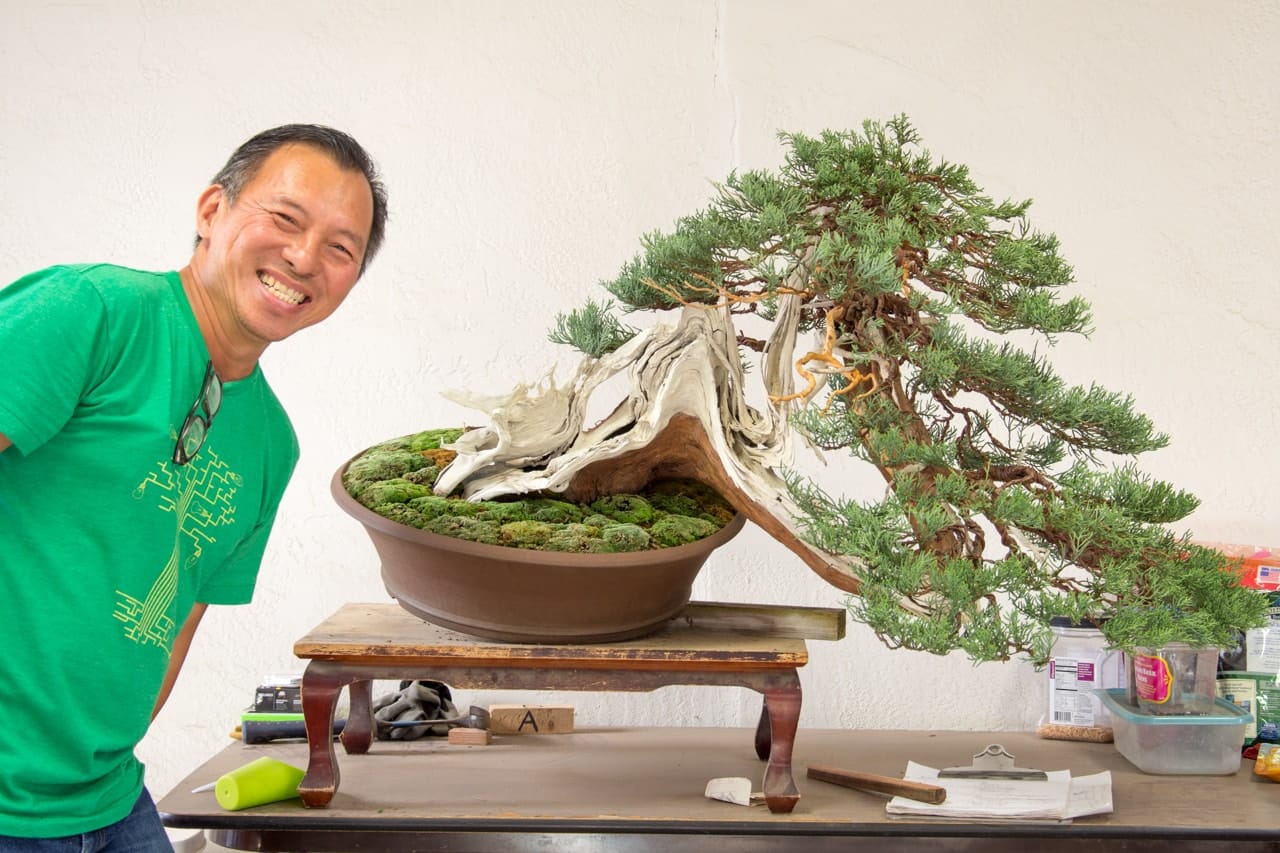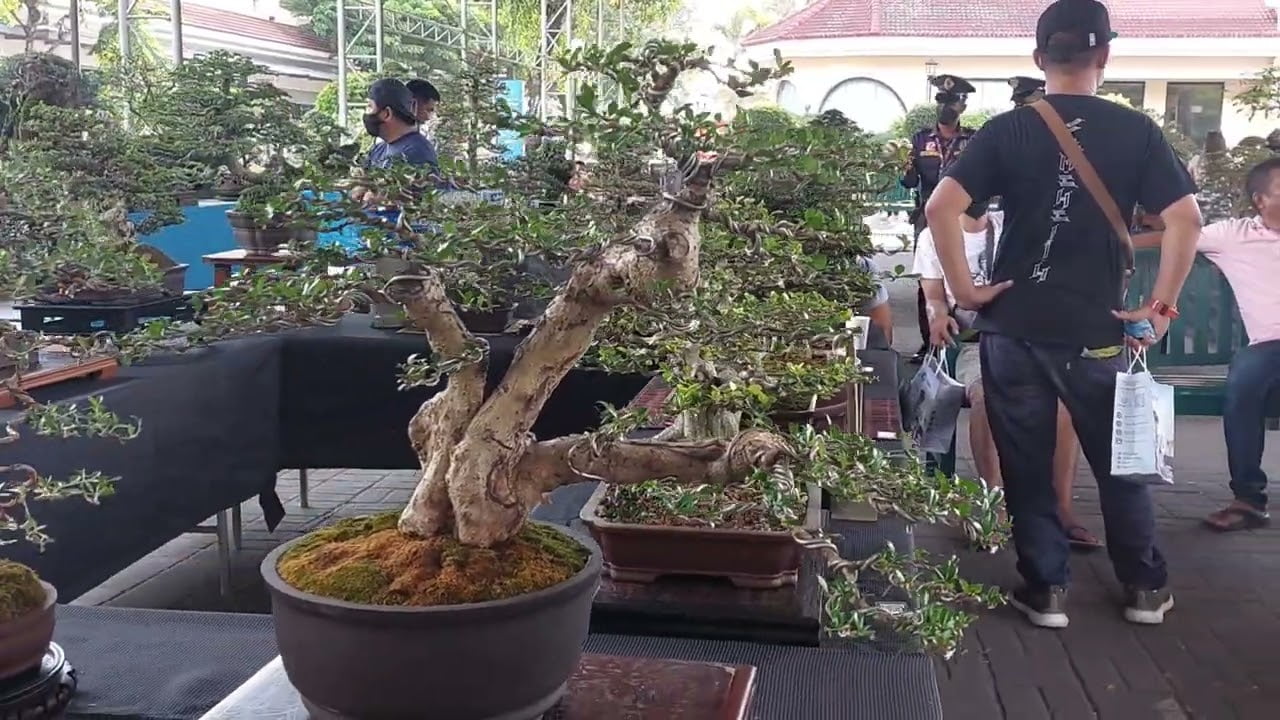Bonsai Tree Clubs and Societies are a great way for enthusiasts to connect and learn from each other. In this article, you’ll discover the benefits of joining these clubs, such as gaining valuable knowledge, attending workshops and exhibitions, and expanding your network of fellow bonsai lovers. Whether you’re a beginner or an experienced bonsai artist, these clubs provide a supportive and friendly environment to nurture your passion. So, let’s explore the world of bonsai together and see how these clubs can enhance your bonsai journey!
Bonsai Tree Clubs And Societies

Introduction
Bonsai trees are a unique and ancient art form that has captivated people for centuries. These miniature trees, carefully cultivated and shaped, symbolize harmony, balance, and patience. As the popularity of bonsai trees continues to grow, so does the importance of bonsai tree clubs and societies. These organizations play a crucial role in preserving and advancing the art of bonsai trees, providing enthusiasts with opportunities for learning, community building, and showcasing their skills.
History and Evolution of Bonsai Tree Clubs and Societies
Origin of Bonsai Trees
The art of bonsai trees can be traced back to ancient China, where it was practiced as early as 700 AD. However, it was in Japan where bonsai cultivation truly flourished. The Japanese refined and perfected the techniques of bonsai tree cultivation, giving birth to the art form as we know it today.
Formation of the First Bonsai Tree Club
The first bonsai tree club, known as the Nippon Bonsai Association, was established in Japan in the early 1900s. This marked a significant milestone in the history of bonsai, as it brought together enthusiasts and provided a platform for sharing knowledge and expertise. The formation of this club paved the way for the spread of bonsai tree societies around the world.
Spread of Bonsai Tree Societies around the World
In the following decades, bonsai tree societies began to sprout up in various countries around the world. The United States, Europe, and other countries with a strong interest in horticulture and gardening embraced the art form, leading to the establishment of local clubs and societies. These organizations played a vital role in introducing bonsai trees to new audiences and fostering a sense of community among enthusiasts.
Benefits of Joining a Bonsai Tree Club or Society
Opportunities for Learning and Skill Development
Joining a bonsai tree club or society provides you with access to a wealth of knowledge and expertise. Experienced members are often more than willing to share their insights and techniques, allowing you to expand your skills and deepen your understanding of bonsai cultivation. Clubs and societies often organize workshops, demonstrations, and lectures, giving members the opportunity to learn from renowned experts in the field.
Access to Expert Advice and Guidance
One of the greatest advantages of joining a bonsai tree club or society is the access to expert advice and guidance. Whether you’re a beginner or a seasoned bonsai enthusiast, having access to experienced mentors can significantly enhance your bonsai journey. These mentors can provide valuable insights into bonsai tree care, styling, and maintenance, helping you avoid pitfalls and achieve better results.
Networking and Community Building
Bonsai tree clubs and societies offer a unique opportunity to connect with like-minded individuals who share your passion for bonsai. These organizations foster a sense of community, where members can exchange ideas, share experiences, and form lasting friendships. Through meetings, exhibitions, and social events, you’ll have the chance to interact with other bonsai enthusiasts, expanding your network and immersing yourself in a supportive community.
Participation in Exhibitions and Competitions
Bonsai tree clubs and societies often organize exhibitions and competitions, providing members with a platform to showcase their skills and creations. These events not only offer the opportunity to display your bonsai trees to a wider audience but also serve as a source of inspiration and motivation. Competing against fellow enthusiasts can push you to refine your techniques and take your bonsai craftsmanship to the next level.
Types of Bonsai Tree Clubs and Societies
Local Bonsai Tree Clubs
Local bonsai tree clubs are typically based in a specific city or region. These clubs provide a close-knit community of bonsai enthusiasts who meet regularly to share their knowledge and passion for bonsai. Local clubs often organize workshops, study groups, and field trips to bonsai nurseries or gardens, providing members with hands-on learning experiences.
Regional Bonsai Tree Societies
Regional bonsai tree societies encompass a larger geographical area, often spanning multiple cities or states. These societies bring together bonsai enthusiasts from different local clubs, providing a platform for collaboration, learning, and the exchange of ideas. Regional societies typically organize larger-scale events, such as conventions or symposiums, where members can learn from renowned bonsai experts and showcase their bonsai trees.
National Bonsai Tree Associations
National bonsai tree associations are umbrella organizations that oversee and support bonsai activities on a national level. These associations bring together regional societies and local clubs under one unified entity, providing a central platform for communication and coordination. National associations often organize national-level exhibitions, competitions, and educational programs, serving as the backbone of the bonsai community in their respective countries.
International Bonsai Tree Federations
At the global level, international bonsai tree federations connect bonsai enthusiasts from different countries and cultures. These federations promote the exchange of ideas and knowledge on an international scale, fostering collaboration and friendship among bonsai enthusiasts from around the world. International federations organize international bonsai exhibitions, conferences, and workshops, providing a platform for showcasing the diversity and beauty of bonsai trees from different regions.

Membership and Participation in Bonsai Tree Clubs and Societies
Requirements for Membership
Joining a bonsai tree club or society usually requires paying membership fees and adhering to the organization’s rules and regulations. Some clubs may have additional criteria for membership, such as owning a certain number of bonsai trees or demonstrating a basic understanding of bonsai cultivation techniques. However, most organizations welcome enthusiasts of all skill levels, making these communities accessible to beginners and experienced bonsai growers alike.
Membership Benefits and Privileges
As a member of a bonsai tree club or society, you’ll enjoy a range of benefits and privileges. These may include discounted access to workshops and events, access to a library of bonsai-related resources and literature, and the opportunity to participate in exhibitions and competitions. Additionally, being a member grants you the privilege of networking with experienced bonsai growers and receiving personalized guidance and advice.
Ways to Get Involved and Contribute
Bonsai tree clubs and societies thrive on the active participation of their members. There are numerous ways to get involved and contribute, regardless of your skill level or experience. You can volunteer at events, assist in organizing workshops or exhibitions, or even take on leadership roles within the organization. By actively participating, you’ll not only gain valuable experience but also contribute to the growth and development of the bonsai community.
Notable Bonsai Tree Clubs and Societies
Description of Prominent Bonsai Tree Clubs
There are several prominent bonsai tree clubs that have made significant contributions to the art of bonsai. The Nippon Bonsai Association in Japan, which was the first bonsai tree club, paved the way for the establishment of bonsai societies worldwide. The American Bonsai Society and the European Bonsai Association have played instrumental roles in popularizing bonsai cultivation in their respective regions.
Highlighting Successful Bonsai Tree Societies
Some bonsai tree societies have achieved remarkable success in their endeavors. The Bonsai Clubs International, a global organization based in the United States, has been instrumental in promoting bonsai artistry and education at an international level. The Bonsai Association Belgium has successfully organized the prestigious European Bonsai Association Trophy, showcasing the talent and creativity of bonsai enthusiasts across Europe.

Promotion and Popularization of Bonsai Trees through Clubs and Societies
Organizing Workshops and Demonstrations
Bonsai tree clubs and societies regularly organize workshops and demonstrations led by expert instructors. These events provide an opportunity for beginners to learn the basics of bonsai care and styling, while more advanced enthusiasts can refine their techniques under the guidance of seasoned professionals. By offering hands-on learning experiences, clubs and societies promote the cultivation and appreciation of bonsai trees.
Educational Initiatives and Outreach Programs
Clubs and societies actively engage in educational initiatives and outreach programs to raise awareness and promote the art of bonsai. These initiatives may include school visits, public exhibitions, and collaborations with educational institutions. By sharing their knowledge and passion for bonsai, clubs and societies inspire new generations to take up the art form and ensure its continuity in the years to come.
Collaborations and Partnerships with Botanical Gardens and Institutions
Bonsai tree clubs and societies often collaborate with botanical gardens, arboretums, and other institutions to showcase their bonsai trees to a wider audience. These partnerships provide members with opportunities to exhibit their bonsai trees in prestigious settings, attracting the attention of both bonsai enthusiasts and the general public. Collaborations with institutions also facilitate the exchange of knowledge and resources, benefiting both parties.
Challenges Faced by Bonsai Tree Clubs and Societies
Limited Funding and Resources
Bonsai tree clubs and societies often face challenges when it comes to securing funding and resources. Organizing exhibitions, workshops, and other events requires financial support, which may be limited. Additionally, obtaining suitable facilities, tools, and materials for bonsai cultivation can be a struggle. Overcoming these challenges requires creative fundraising efforts and the support of the bonsai community.
Maintaining Member Engagement and Retention
Keeping members engaged and enthusiastic is essential for the continued success of bonsai tree clubs and societies. It is crucial to provide members with a variety of activities, workshops and events that cater to their interests and skill levels. Additionally, fostering a sense of community and belonging through regular communication and social events can help retain members and keep them actively involved.
Inclusivity and Diversity
Bonsai tree clubs and societies need to address issues of inclusivity and diversity within their organizations. Encouraging the participation of individuals from diverse backgrounds and creating an inclusive environment not only enriches the bonsai community but also broadens the perspectives and experiences shared within the organization. Efforts should be made to ensure that all individuals feel welcome and valued within the bonsai community.

Future Prospects and Growth of Bonsai Tree Clubs and Societies
Emerging Trends and Innovations in Bonsai Tree Cultivation
The art of bonsai is continually evolving, with new techniques and approaches emerging. Bonsai tree clubs and societies play an essential role in keeping members informed about these trends and innovations. By facilitating the exchange of knowledge and promoting experimentation, clubs and societies fuel the growth and development of bonsai tree cultivation techniques.
Fostering International Collaboration
As bonsai cultivation becomes increasingly globalized, there is a growing need for international collaboration among bonsai tree clubs and societies. Through partnerships and joint initiatives, organizations from different countries can share their expertise and perspectives, enriching the bonsai community as a whole. International collaborations also promote cultural exchange and mutual understanding.
Expansion of Online Communities
With advancements in technology, online communities dedicated to bonsai tree cultivation have flourished. Bonsai tree clubs and societies can embrace this trend by creating online platforms for members to connect, share ideas, and seek advice. These virtual communities provide a convenient way for members across different regions and time zones to interact and collaborate, further expanding the reach and impact of bonsai tree clubs and societies.
Conclusion
Bonsai tree clubs and societies play a vital role in preserving and advancing the art of bonsai trees. These organizations provide a platform for learning, community building, and exhibition, offering bonsai enthusiasts opportunities to develop their skills, access expert advice, and showcase their creations. Through their efforts, bonsai tree clubs and societies ensure the continued growth and popularity of this ancient art form, keeping the spirit of bonsai alive for generations to come.



